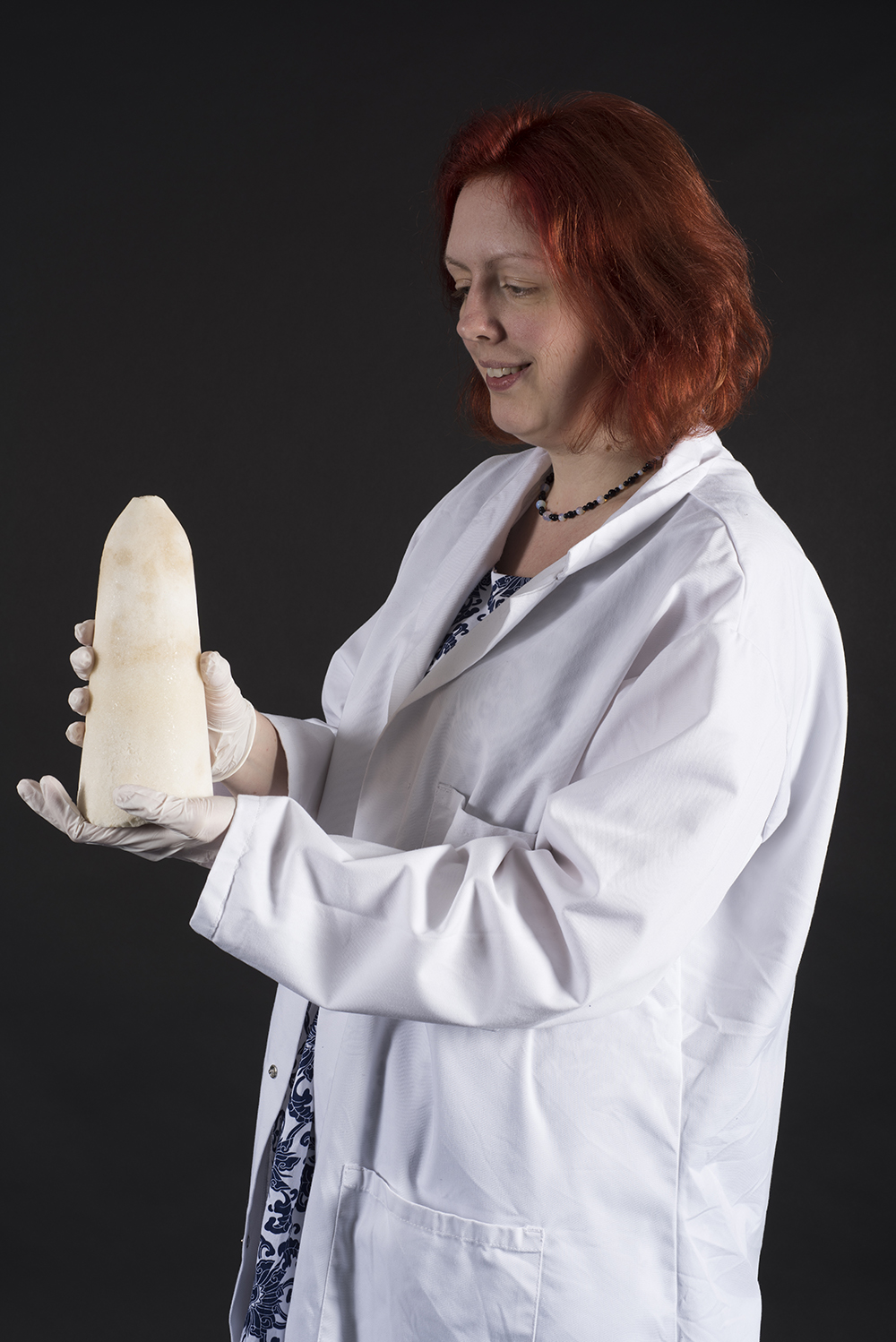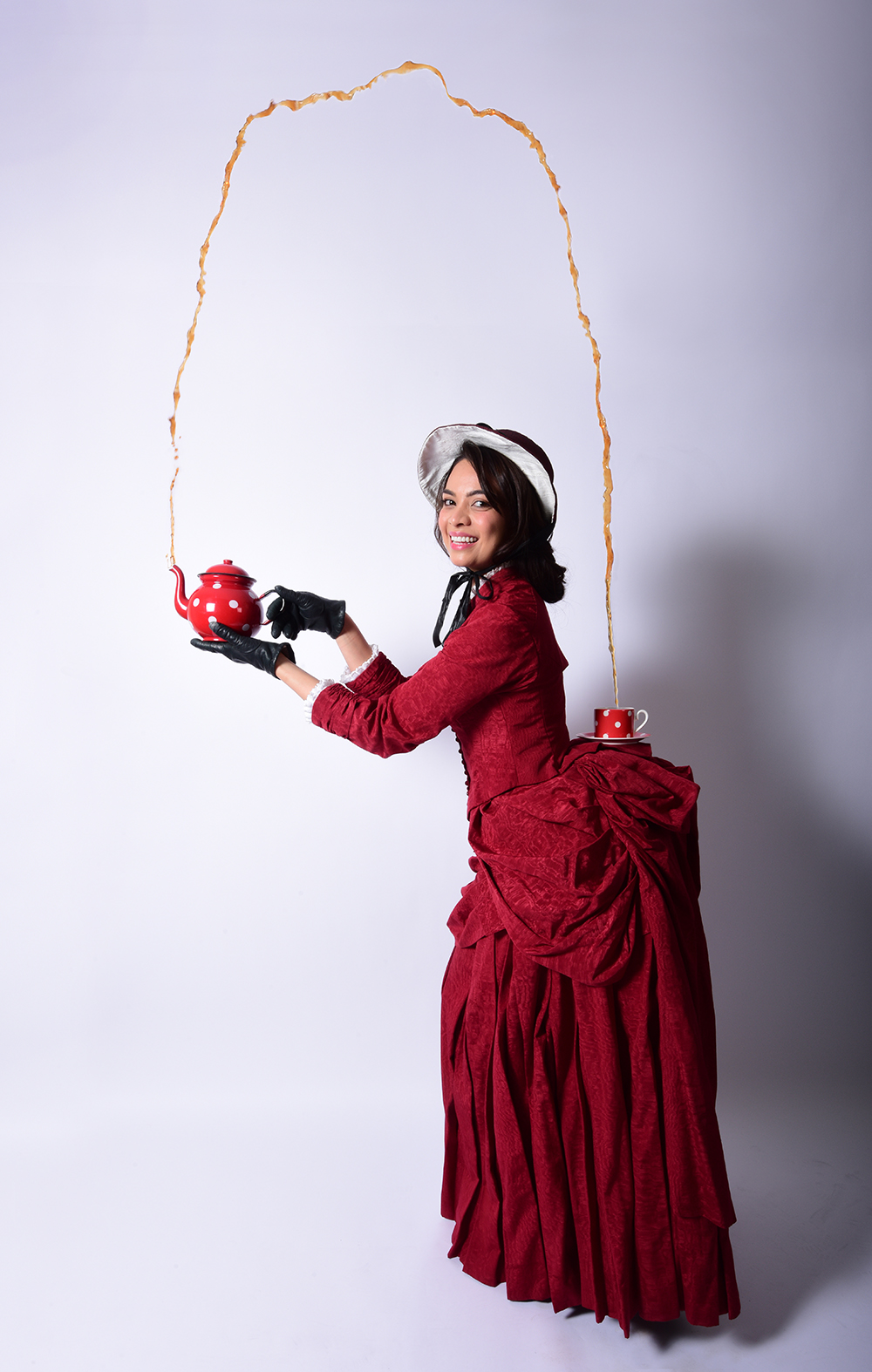No one bats an eyelid if you mention bums, boobs, or any other ‘b’ words describing ‘sexualized’ parts of the anatomy today. It was different in Victorian times, which is why the word bustle was invented. Victorians were as obsessed with their bodies as we are now. Women wore bustles with corsets to fill out the rump and emphasize the waist and bottom. It’s said there is a link between the bustle and the exaggerated shapes of South African Khoikoi women, who were exhibited as freak show attractions in nineteenth century Europe – the most famous being popularly known as Hottentot Venus. But corsets have been worn since Elizabethan times – and, from around 1580, a padded ‘bum-roll’ was used to accentuate the curve of the hips under a voluminous skirt. This remained a fashion fixture until the Regency period.
The fact that history often repeats itself is drawn attention to by the curators of a forthcoming permanent exhibition at York Castle Museum. Shaping the Body examines the links between fashion, lifestyle and diet over the past 400 years. An exhibit relating to sugar (including the rare 18th century sugar cone shown below) proves that the government’s recent plans to implement a sugar tax are nothing new. With the introduction of the Sugar Act in 1764, the government collected nearly £1 million each year – the equivalent of £106 million in 2016. The Act was only repealed later in 1874, when local production of sugar beet had turned sugar from a luxury item into an everyday commodity.

Our relationship with food and body image has changed throughout history, but there are common trends. Victorian diet pills, made with arsenic, were much more toxic than those of today. 1990s ‘heroin chic’ has its parallel in the ‘TB chic’ of the early 19th century. In the 1930s, parasitic worms were even employed to control weight. A fascination with the freakish, as evidenced in Victorian times, could explain the current craze for physical enhancement and body altering plastic surgery. The exhibition in York explores body modification – from Victorian ear straighteners (ouch!) to contemporary gender reassignment, tattoos and piercings – as well as the effect of lifestyle and wealth on eating habits and size. Historical fashion undergarments from the last 400 years will also be on display, including an iron corset and crotchless pantaloons from the time of Jane Austen.
And if that’s not enough, you can see more underwear at the V&A in April when everything from Mr Pearl’s whalebone corsets, Jane Russell style underwired bras and padded crotch-enhancing underpants will be on show. Undressed: A Brief History of Underwear will focus on the sensual and fetishistic appeal of fitted undergarments, alongside the work of pioneers such as Paul Poiret, who reformed the style and comfort of dress in favour of natural lines.
But for now, curvaceous figures, in vogue on and off over the centuries, appear to be back with a vengeance. Or have they ever gone out of fashion? Vivienne Westwood is still creating timeless, vintage-style corset dresses, Jean-Paul Gaultier’s conical bra has become a worldwide fashion statement – and what of Roland Mouret’s figure-enhancing Galaxy dress and the gzillions of copycat designs it has spawned – turning female newsreaders into synth-like, curvy clones? York Castle Museum has even recreated one of Kim Kardashian’s famous ‘break the internet’ booty shots – illustrating that what goes around comes around: The shape of fashion can, and often does, turn full circle.

© Anthony Chappel-Ross for York Museums Trust.
07734115485
Shaping the Body: 400 Years of Fashion, Food and Life is at York Castle Museum from 25th March
Undressed: A Brief History of Underwear is at the V&A from 16th April 2016– 12th March 2017
March 10, 2016
Body Shape: Food, Fetishism and Fashion
No one bats an eyelid if you mention bums, boobs, or any other ‘b’ words describing ‘sexualized’ parts of the anatomy today. It was different in Victorian times, which is why the word bustle was invented. Victorians were as obsessed with their bodies as we are now. Women wore bustles with corsets to fill out the rump and emphasize the waist and bottom. It’s said there is a link between the bustle and the exaggerated shapes of South African Khoikoi women, who were exhibited as freak show attractions in nineteenth century Europe – the most famous being popularly known as Hottentot Venus. But corsets have been worn since Elizabethan times – and, from around 1580, a padded ‘bum-roll’ was used to accentuate the curve of the hips under a voluminous skirt. This remained a fashion fixture until the Regency period.
The fact that history often repeats itself is drawn attention to by the curators of a forthcoming permanent exhibition at York Castle Museum. Shaping the Body examines the links between fashion, lifestyle and diet over the past 400 years. An exhibit relating to sugar (including the rare 18th century sugar cone shown below) proves that the government’s recent plans to implement a sugar tax are nothing new. With the introduction of the Sugar Act in 1764, the government collected nearly £1 million each year – the equivalent of £106 million in 2016. The Act was only repealed later in 1874, when local production of sugar beet had turned sugar from a luxury item into an everyday commodity.
Our relationship with food and body image has changed throughout history, but there are common trends. Victorian diet pills, made with arsenic, were much more toxic than those of today. 1990s ‘heroin chic’ has its parallel in the ‘TB chic’ of the early 19th century. In the 1930s, parasitic worms were even employed to control weight. A fascination with the freakish, as evidenced in Victorian times, could explain the current craze for physical enhancement and body altering plastic surgery. The exhibition in York explores body modification – from Victorian ear straighteners (ouch!) to contemporary gender reassignment, tattoos and piercings – as well as the effect of lifestyle and wealth on eating habits and size. Historical fashion undergarments from the last 400 years will also be on display, including an iron corset and crotchless pantaloons from the time of Jane Austen.
And if that’s not enough, you can see more underwear at the V&A in April when everything from Mr Pearl’s whalebone corsets, Jane Russell style underwired bras and padded crotch-enhancing underpants will be on show. Undressed: A Brief History of Underwear will focus on the sensual and fetishistic appeal of fitted undergarments, alongside the work of pioneers such as Paul Poiret, who reformed the style and comfort of dress in favour of natural lines.
But for now, curvaceous figures, in vogue on and off over the centuries, appear to be back with a vengeance. Or have they ever gone out of fashion? Vivienne Westwood is still creating timeless, vintage-style corset dresses, Jean-Paul Gaultier’s conical bra has become a worldwide fashion statement – and what of Roland Mouret’s figure-enhancing Galaxy dress and the gzillions of copycat designs it has spawned – turning female newsreaders into synth-like, curvy clones? York Castle Museum has even recreated one of Kim Kardashian’s famous ‘break the internet’ booty shots – illustrating that what goes around comes around: The shape of fashion can, and often does, turn full circle.
© Anthony Chappel-Ross for York Museums Trust.
07734115485
Shaping the Body: 400 Years of Fashion, Food and Life is at York Castle Museum from 25th March
Undressed: A Brief History of Underwear is at the V&A from 16th April 2016– 12th March 2017